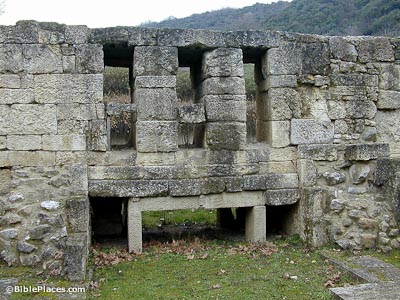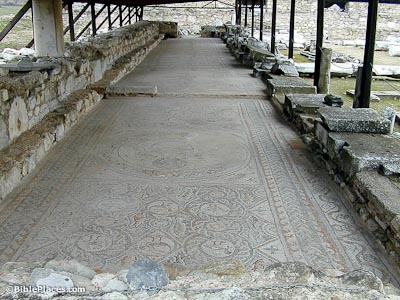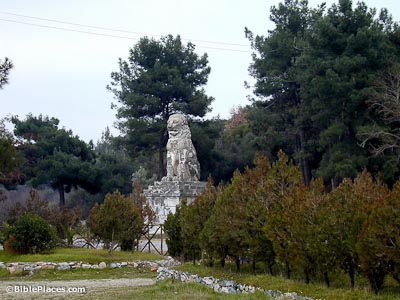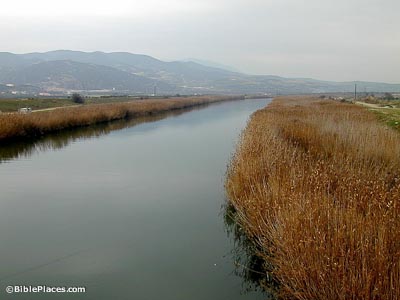Just north of the Aegean Sea sat Amphipolis, a city of northeastern Macedonia. It was approximately 30 miles (45 km) southwest of Philippi and 5 miles (8 km) inland of the port city Eion. The city was best known for its oil, timber, wine, figs, gold, silver, and woolen textiles. Thracians first founded this site, a strategic military and commercial location, in the 5th century BC.
Amphipolis

City Wall with Gate, 5th century BC
Byzantine Basilica Mosaics
The Greek Archaeological Service has excavated Amphipolis since 1956. Inscriptions, coins, remains of a Roman aqueduct, and classical and Hellenistic tombs are among their finds. The walls, bridge, and gymnasium have also been well preserved. Five churches have been uncovered in which several floor mosaics can still be seen, many showing representations of birds.


Amphipolis Lion
The Lion of Amphipolis was constructed in the 3rd or 2nd century BC and may have honored Laomedon, companion of Alexander the Great who became governor of Syria. Reassembled in the 1930s, it sits in the city today, just as it did when Paul came to the city during the 1st century AD. Paul came through Amphipolis with Silas during his second missionary journey, traveling on the Ignatia Way from Philippi to Thessalonica (Acts 17:1).
Stremones River
Amphipolis rested on a terraced hill at a bend in the Stremones River, which drained into Lake Cercinitus. The river surrounded the city on three sides, while a wall protected the city’s eastern side. The Ignatia Way, the main east-west Roman road traveling from Asia to Italy, passed through the city along a bridge over the Stremones in the 1st century AD. Fossilized woodpiles remaining from the bridge can be seen today.


Download all of our Greece photos!
$34.00 $49.99 FREE SHIPPING
Related Websites
Amphipolis (Ancient History Encyclopedia). An introduction to the site’s history and points of interest, including the recently-discovered tomb.
Amphipolis (Livius). This article offers more information about Amphipolis’s history, illustrated with many good photos.
Amphipolis (Macedonian Heritage). Highlights some of the city’s history and features. Features an excellent sketch of the gymnasium.
Amphipolis History (Amfipolis.com). This page on the site’s history is of interest, but the site also has pages on the Lion of Amphipolis and the local museum.
Site Catalog Name: Amphipolis (Perseus Digital Library). Offers a brief description and a bibliography, but noteworthy for containing 70 photos of the site.
The Amphipolis Tomb (TheAmphipolisTomb.com). This website collects information about the discovery that Amphipolis is now most famous for.
The Guardian of Amphipolis (YouTube). For those curious about the excavation history of Amphipolis, this documentary will prove interesting.